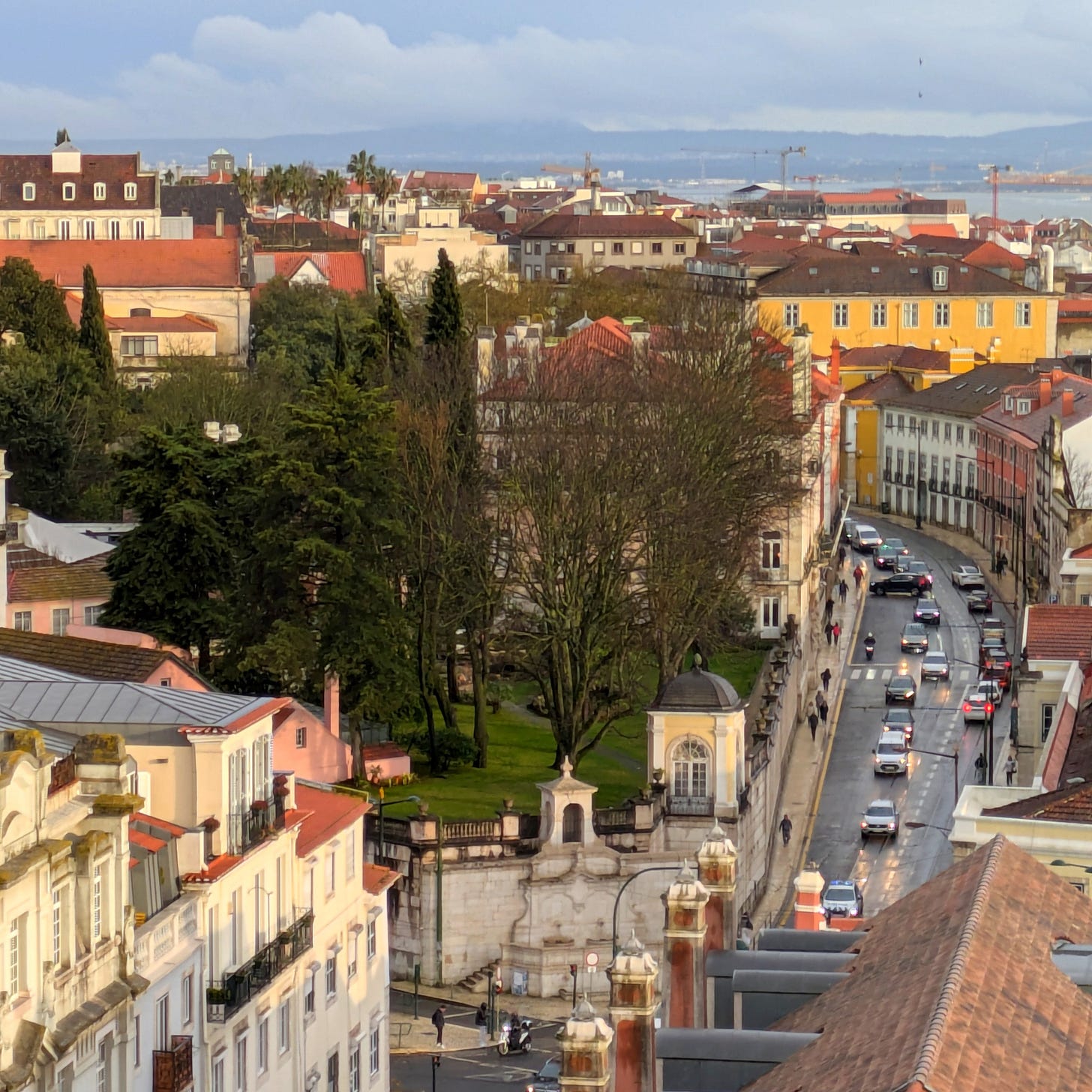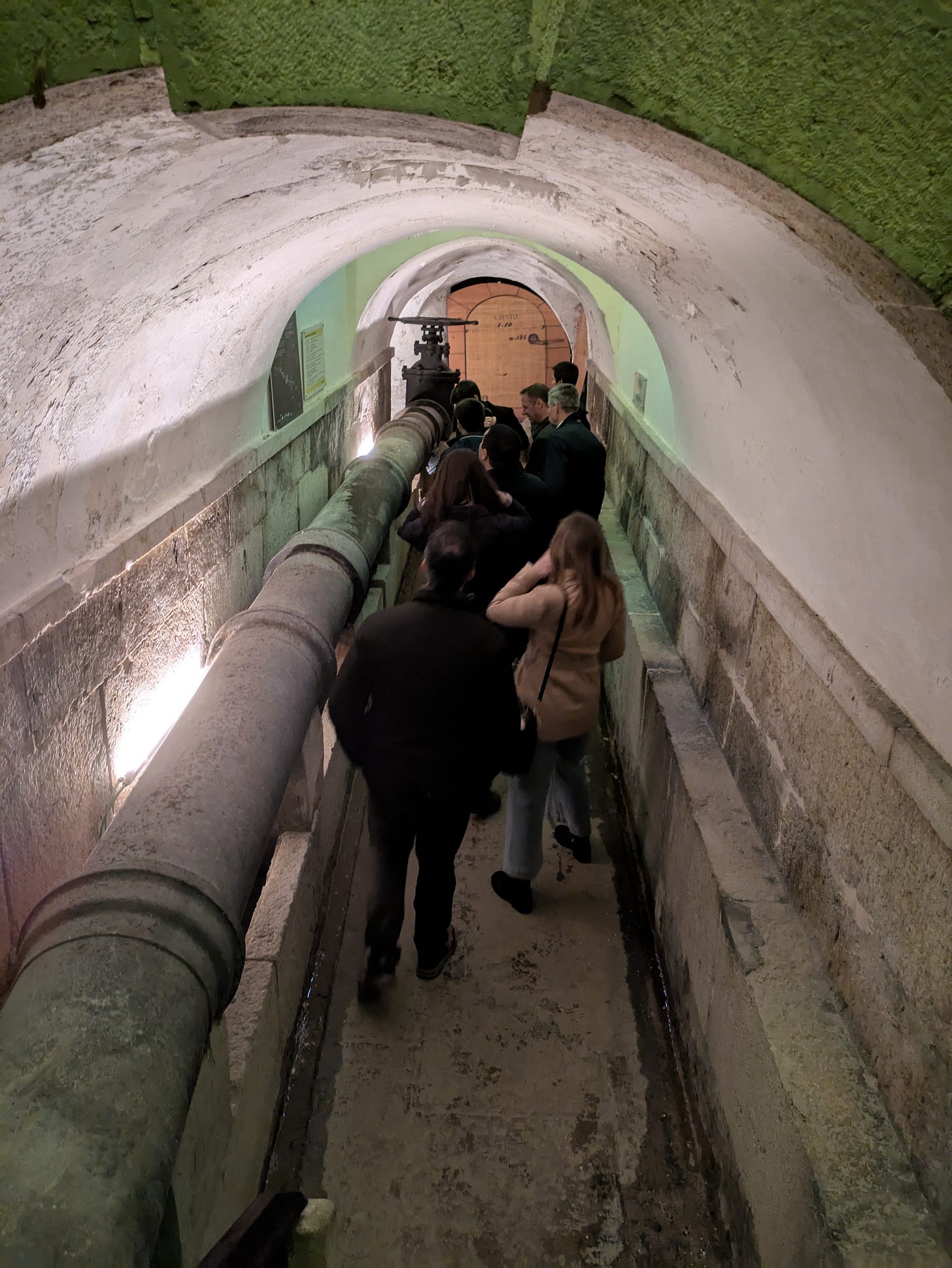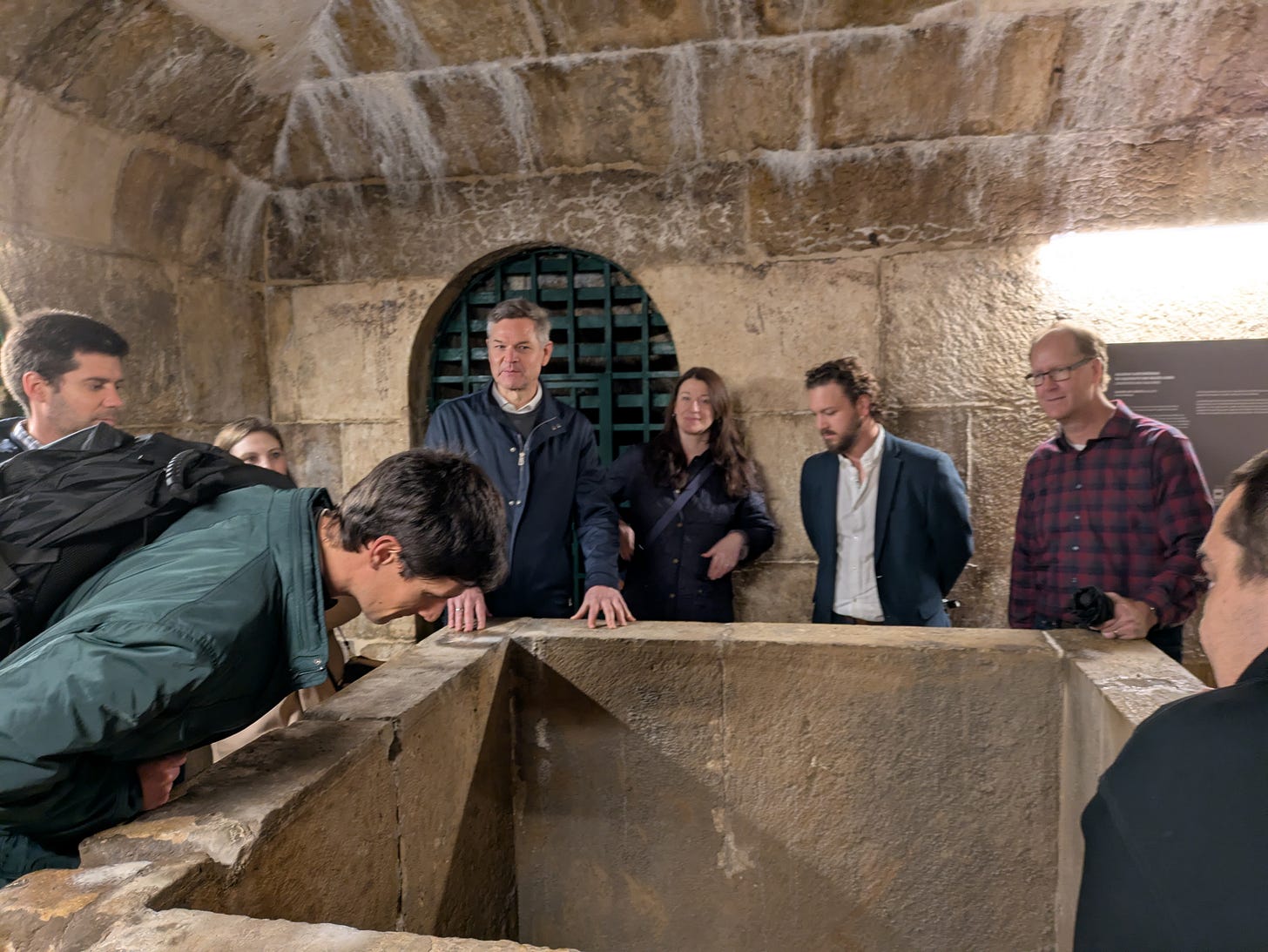Aqueduct of Águas Livres, 1748
travel case study
It's 1755 All Saint's Day. Tremors have opened up a 16 ft wound across the earth, knocking over candles and burning down wooden buildings everywhere, adding to the chaos. Tidal waves are 20 ft tall, chasing people up the Tagus estuary and even propagating to the colony in the western hemisphere. Later, historians will tally that a quarter of the city doesn't survive along with nearly a third of the country's GDP. At 7.7 on the (yet to be invented) Richter scale, this is one of the largest earthquakes to shake Europe.
However…
There is an engineering feat still miraculously standing. The aqueduct of free waters. Mind you, free does not refer to the cost - this was paid for by brutal taxes on wine, meat, and olive oil. Instead its homage is to fallen water from the sky and brought by gravity into Lisboa.
Its necessity was vital to life. The only reliable water in the 18th c was from the clay formations near the Alfama district, a destination in posterity known for the narrow streets built pre-earthquake. City planning would change remarkably after the quake with Marquês de Pombal at the helm of the design. This design, with the help of military engineers, reflected new values in which the citizens would take precedence over the church and the crown. The Aquas Livres plays an important role in this rebuilding, as a structure still standing when the rest of the city was in chaos, it served “as a training ground for the craftsmen who later assisted in the rebuilding of Lisbon.”
As the city expanded it needed reliable fresh water elsewhere in the city, underlain by limestone formations. The aqueduct starts in the Caneças region, with little architectural details. As it comes into the city it becomes more grand, more baroque, and more modern. Well modern for this time.
And innovative. This design is built on a person-scale. Maintenance can be done inside the aqueduct without cutting off the flow of water. It sports windows from the inside. This makes it a comfortable walk and I’ve heard a rumor that it used to be a cyclist throughfare.
A colleague of mine hooked us up with a private tour from the water utility historian. We walked a few kilometers of the aqueduct down the middle lane with troughs on either side.

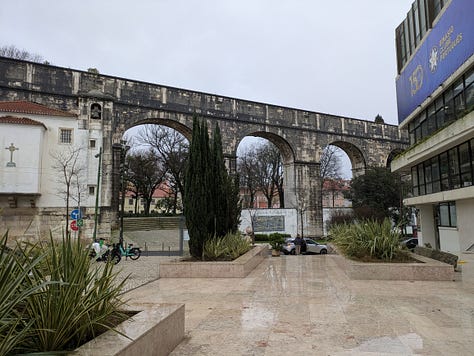



Near the start we came upon the Arco Trunfal das Amoreiras, the most spectacular of the arches. This Doric arch is a commemorative monument to the waters entering the city in 1748. The round windows in my photo are the round windows seen from outside (and in the 1908 photo below), just as the aqueduct makes a 90 degree turn. From the inside, the water tray makes the turn without any additional engineering, indicating lower velocities.
From here we head up to the top of the aqueduct with a view of the city. Looking down, you can see one of the 30 street fountains which were fed from these waters. There would have been services for home delivery of water for the wealthy, which I talk about in this Scottish travel case study. Each fountain has a location for horses, drinking fountains, and waterboys. And that is as good as in-house plumbing gets in 1755.
And as we continue into the city we emerge in an underground reservoir. The deposits from the waterfall tells the story of mineral-rich “free water” from the springs. The story goes that the queen would come in here daily to listen to the waterfall and be at peace (unverified).

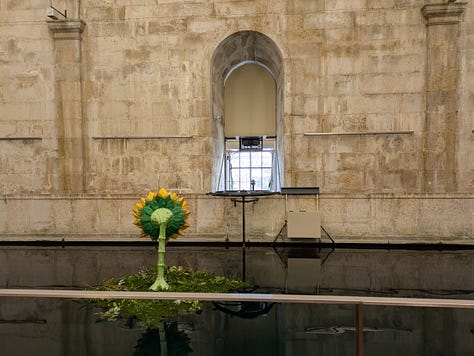

As the aqueduct lowers in elevation it eventually makes its way underground. Many people will say that it's a gravity fed aqueduct. And that's true for the most part. Designed with Darcy principles it features portions in the underground between differing pressure zones. These reaches are pressurized, encapsulated in concrete on either side of the walkway.
To perform maintenance on any of the portions, stones can be lowered into the flow of water to access a portion of it. These stones have been sealed into place and its evident that some of this right-of-way was used to put in more modern piping. In the 21st c, the acqueduct is no longer in use. The trays of water in the tunnel have signs of sedimentation and ultimately other means of water transport have been adopted.
As we continue underground the ceiling slopes downward. At the lowest portion it’s 1.75m (5.75 ft) tall where its been reinforced for the trolley to be able to safely travel above it. I didn’t have any issues with that clearance but I was in the minority!
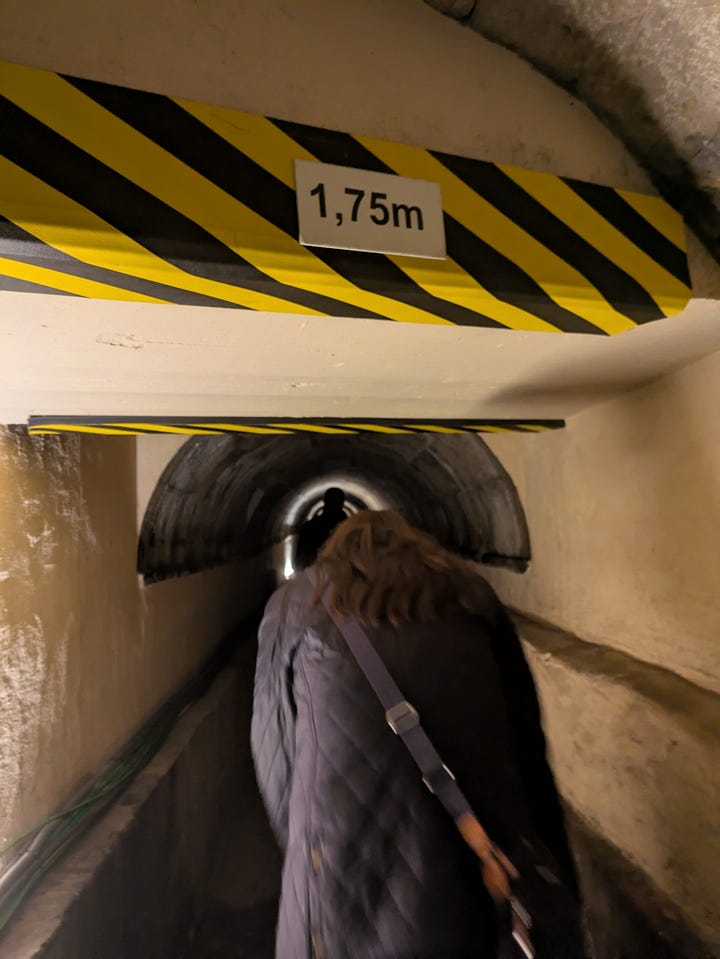
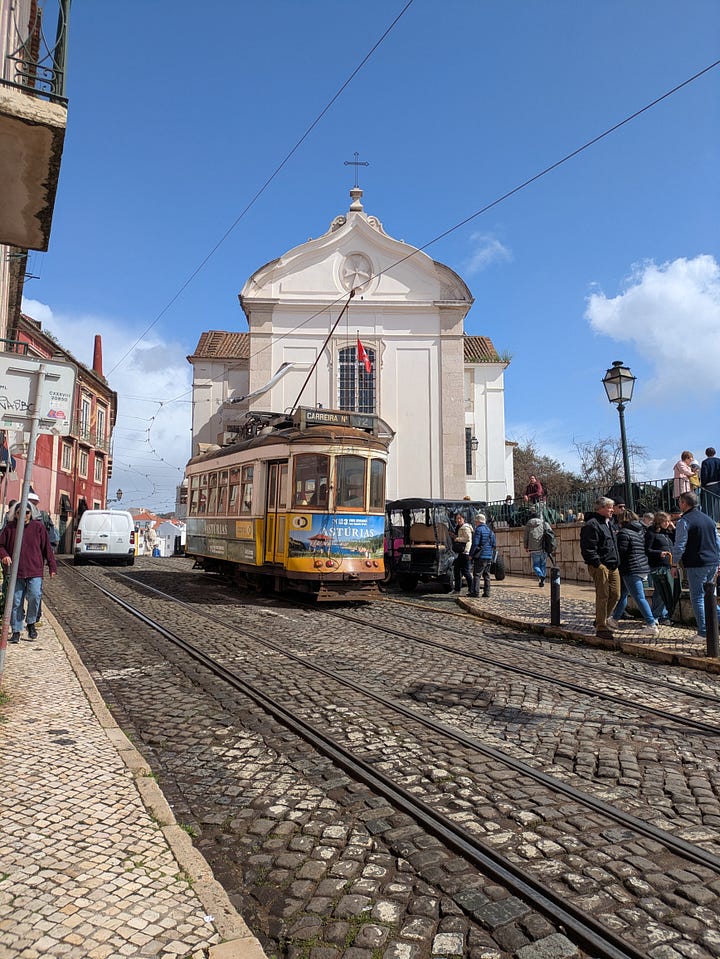
In fluid dynamics, non-pressurized reservoirs can help to control the pressure at each node. One of these nodes we stopped at to see how the pressure transients are taken care of. In the event of a water hammer, water can spill over this basin and be collected back again from the floor, without any waste of water. If memory serves, there was a small door to a wine cellar in this area. They really did think of all the operational concerns!
The photo below shows a much smaller basin. The pressure of water at the surface of water is equal to the hydraulic head (height from the datum) in this small reservoir and also at a small basin on the other side of the wall, connected through a small hole. This is the only one that looked like this — it services the palace through the principle of balancing of water. There is net flow between reservoirs.
The palace was the only residence plumbed like this and would likely be somewhere in their basement where the servants would go to access water.
Portions of the aqueduct will continue to be developed into the 19th c. Similar to 21st c techniques, the tunnel was started from either end and met together in the middle. Without the help of digital surveying the tunnels connected about 20 steps away and is joined by a short zig between the segments. I didn’t take any photos of that!
We pop out through a non-descript door right in the Miradouro de São Pedro de Alcântara and back with the other tourists. If you walk across Lisboa: between the stone arches and Tagus river you are reminded that water is at the heart of Lisboa. And also of vino.
If you want one last cool thing to look into, search the Santa Justa Lift in Lisbon. Actually there’s a lot of cool old engineering there.



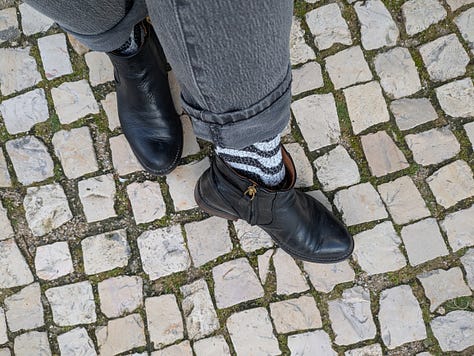
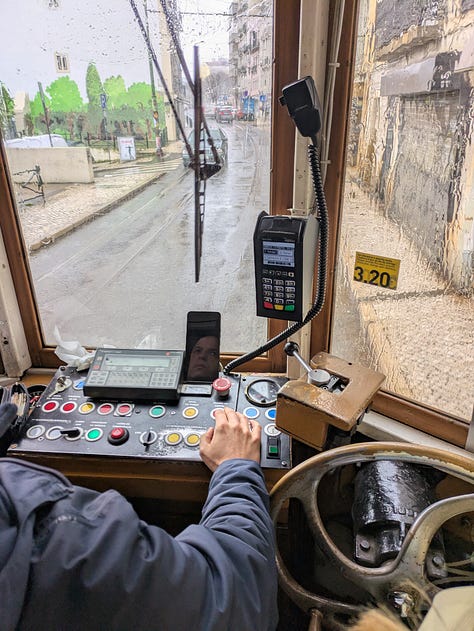

Reading: This interesting book about salt’s global history. By Mark Kurlansky.
Working: Chatting with users on their technology needs so I can take it back to the team and see how we can help them.
Listening: The Coachella live-stream.





